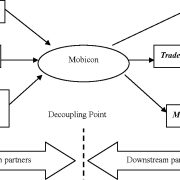The modern industrial environment demands that businesses automate their processes if they want to remain competitive. Businesses in these sectors are increasingly adopting control system integration to enhance efficiency, minimize losses and make their systems easier to operate. Businesses can monitor, manage and optimize their processes effectively by connecting different devices and applications into a single unified system.
What Is Control System Integration?
Integrated control systems join programmable controllers, supervisory controls and other sensors into a comprehensive network. All components are designed to recognize and communicate effectively with each other across the system.
Integrating traditional and modern technologies helps make sure all parts of your operations work together efficiently. Integrated control systems enable many types of workflows to operate more smoothly and efficiently.
Things to Consider in an Integrated Control System
For a system to work well, all its parts must be properly integrated.
- Matching up sensors, control devices and equipment so they can work together.
- Software Configuration: Human-Machine Interfaces allow the program to react according to what the user says or does..
- Communication Protocols: Transitioning from machinery attached to one small computer to operations managed by a single interconnected control system.
- Data Handling: Processed data used for making informed choices and producing valuable reports.
- Security Frameworks: Shielding systems using firewalls, access authentication and encryption protocols.
Once all these components work together, they create a strong system capable of facilitating automation and flexibility.
Benefits of Control System Integration
Integrating control systems brings numerous benefits to organizations.
- Improved Efficiency: Correlated processes eliminate the need for multiple operators and significantly decrease task completion times.
- Being able to view data in real time allows firms to make faster and smarter decisions.
- With predictive and real-time monitoring, equipment failures and issues are far less likely to come unexpected.
- Automation and effective use of resources can save companies on energy and labor bills.
- Integration makes it simpler to add more users or extra features during important growth or the addition of new systems.
Make facilities duplication more efficient.
Good Practices for Execution
Integration can be accomplished by implementing these following essential points.
- Complete a Needs Assessment: Review what you have now and your main intentions to make an individual game plan for implementing the integration.
- Choose Compatible Technologies: Pick hardware and software compatible with commonly used industry standards for easily integrated communications.
- Prioritize Cybersecurity: Ensure integrated systems are secure by implementing stringent cybersecurity measures.
- Test Thoroughly: Test systems in stages to verify their interactions prior to implementation.
- Provide Training: Develop the skills of employees managing and preserving integrated systems to ensure that the adjustment process is uncomplicated.
Regular audits and performance assessments allow you to enhance your integrated systems as your workflow changes.
Why Control System Integration Matters
Control system integration becomes essential for industrial organizations as automation becomes the norm to attain high operational efficiency and productivity. Control system integration allows organizations to update existing systems, enhance their workflows and augment their operational efficiency. Authorities emphasize that controlling system integration allows companies to improve automation, reduce costs and thrive amidst a rapidly evolving technological landscape.






Comments